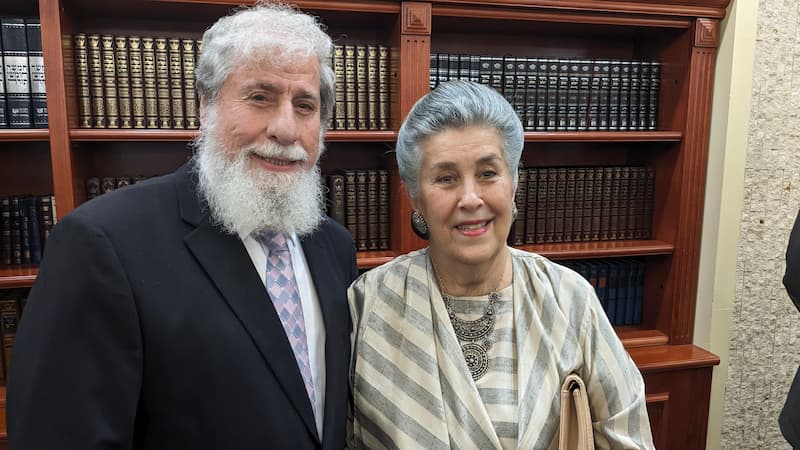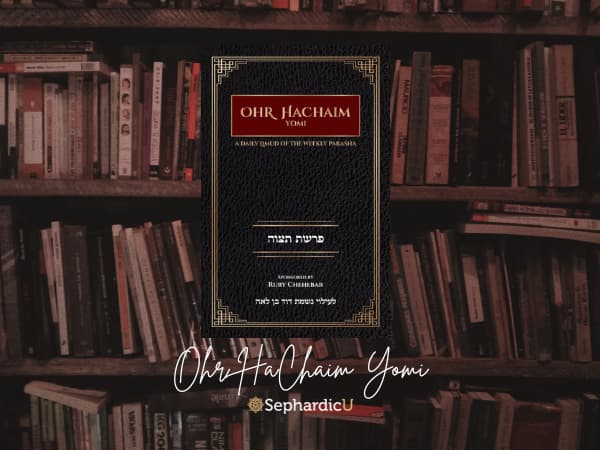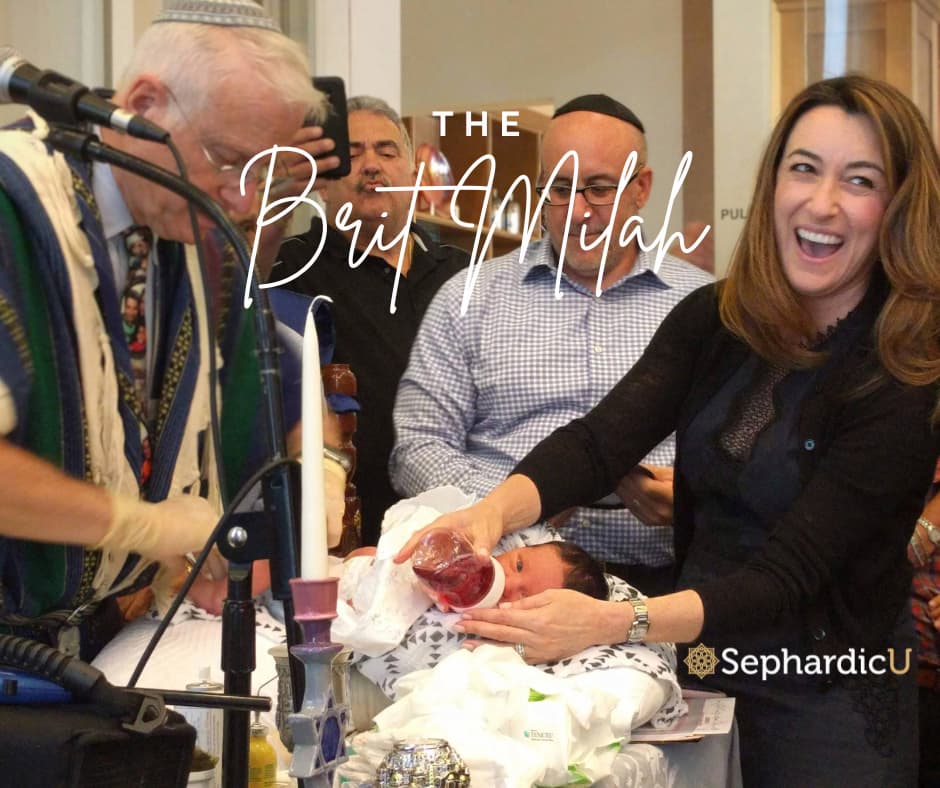Join us on a journey into the rich tapestry of Sephardic Shavuot Customs as we explore the insightful words of Deanna Pool, delivered during an overnight Shavuot event at Kehilath Israel Synagogue in Overland Park, Kansas, in May 2002. Through her enlightening speech, Deanna Pool invites us to delve deeper into the unique practices observed by Sephardic Jews during this festive holiday. From the meticulous counting of the Omer to the joyous celebration of Torah study, Deanna Pool offers us a glimpse into the vibrant world of Shavuot customs and rituals. Let us embark on this exploration together and discover the beauty and significance of Shavuot as seen through the lens of Sephardic tradition.
Sephardic Shavuot Customs by Deanna (Amar) Pool
Three times a year, responding to the official call, “Arise ye, and let us go up to Zion unto the Lord our God” (Jer. 31:6) our ancestors excitedly went up to Jerusalem, marching to the rhythm of the flutes and singing “pilgrim songs.”
While Pesach is the Festival of Matzot, and Succot is commemorated by dwelling in the booths and waving the lulav, Shabuot, as the Festival of the Weeks is identified with the counting of the Omer.
In Sephardi synagogues, a Sefirat Haomer plaque helps congregants keep track of the countdown till Shabuot. Mindful of our rabbis’ warning, “would an expectant mother forget to count the days till her child’s birth?”, we observe the counting scrupulously. A lapse of that observance disqualifies the faithful from reciting the Sefirat audibly.
Recalling God’s admonition to Moses to “go to the people and sanctify them today and tomorrow and they shall wash their clothing,” (Ex.19:10) Sephardim customarily go to the mikveh on erev Shabuot and sometimes on the very morning of Shabuot.
Mincha services do not start until after the stars appear in the sky, an exception to the established daily ritual, so as to complete the seven weeks of the omer.
In anticipation of the giving of the Ten Commandments, Jews around the world study Torah all night. It was during such a night, that Yosef Karo, the author of “Shulchan Arukh,” received a personal divine revelation through a “maggid,” an angelic voice, whose daily visits inspired him to write “Maggid Mesharim.” Rabbi Shelomo Alkabetz, the composer of Lecha Dodi, witnessed that moment.
At lel Tikun, to prove how deserving they are of the Ten Commandments, some congregations intentionally add the reading of Parasha Naso, which, at 176 verses, is the longest parasha of the Torah – hence, the derisive Spanish rhyme “Me canso Naso” “Naso tired me out.”
On the first day of Shabuot, as we open the Holy Ark, many Sephardi congregations read the Ketuba le Shabuot in Hebrew or Ketubah de la Ley in Ladino. This “piyyut” is actually a love song patterned after Shir Hashirim, and is written in the form of a marriage contract between God and Israel. Composed by the Safed mystic, Rabbi Israel Nagara (1550-1625) it is inspired by Hosea verses 2:21-22 “I will betroth you unto Me in righteousness, and in justice, and in loving kindness, and in compassion. And I will betroth you unto Me in faithfulness; and you shall know the Lord,” and by Jeremiah 31:31 “I will make a new covenant with the house of Israel”.
God, as the bride’s father gives Israel, the 613 commandments, the Bible, Talmud and other sacred writings as dowry. Moses gives his son, the people of Israel, the tallit and tefilin, the Shabbat and festivals. The bride enters the chuppah vowing: “We shall do and we shall hear.”
The reading of the Ketubah concludes with the prayer: “May the groom rejoice with the bride whom he took unto himself for his portion. May the heart of the bride rejoice in the husband of her youth and may she praise him “Happy is the people whose portion is thus.” Witnessed by God and His servant Moses, the contract is dated the 6th day of sivan, in the year 2448 from the Creation.
Ketubah le Shabuot, prompted Or Ha Haim, Rabbi Haim ben Atar, (1696-1743), my mother’s ancestor, to comment that “Shabuot, the festivals of the weeks, should also be known as Shevuot, the festival of oaths.”
At the reading of the Ten Commandments, the congregants stand up in reverence. Men pull their tallit over their heads, gather their children close to them, and huddle together in silent piety. Women with palms upstretched, eyes closed, and lips moving silently in prayer share a moment of awe within the women’s section as the hazzan intones the words of the Revelation.
Where Ashkenazim recite the Akdamut, Sephardim chant the Azharot, a rhymed listing of the 613 commandments composed by the medieval scholar and poet Shlomo Ibn Gabirol of Malaga (1020-1069). Maintaining one rhyme throughout in the last word of each of its 255 quatrains, while also rhyming the first three lines within each quatrain, is a literary feat that only a writer such as Gabirol could achieve. Here is the first quatrain:
“Amon yom ze, nahalu ham ze
al yad choze, ish ha elohim
Note aliyah, ve yosed nesiyah,
Lekha dumiyah, tehila elohim”
“Verily this is the day on which Israel inherited the Torah
Through Moses the seer, the man of God.
Praise is befitting Thee, who did stretch forth the heavens
And establish the earth, O God.”
Outside of Israel, the positive commandments of the Azharot are read on the first day of Shabuot in conjunction with the first half of the Book of Ruth. The remainder of the Azharot and the Book of Ruth is completed on the second day.
The festive nature of the holidays and their consecration to God “hag l’Adonai” does not allow for any sadness, therefore Sephardim do not observe the memorial service of Yizkor.
Psalms hold a place of honor at synagogue services and at home: it is on Shabuot that their author, King David was born and died. It is at Shabuot, that his ancestors Ruth the Moabite and the righteous Boaz met. The sages teach us that the noun Ruth means “sated” and that David “sated” God as it were with his psalms of praise and love.
In addition to being a harvest festival, Shabuot is also known in the Sephardi world as a water-festival. At the end of services, as the faithful walk back home, it is customary to splash them with water to recall that Torah flowed like water upon the parched souls of the Israelites at Sinai. It also reminds us that Moses was drawn out of the waters by the daughter of Pharaoh on the 6th of Sivan.
At home the celebration of Shabuot is inaugurated by bringing a sheaf of wheat, just as we brought a sheaf of barley at Pesach.
In accordance with Rabbi Yosef who would order on Shabuot: “Prepare me a third-born calf of his mother” (Pesahim 68) and our sages who said: “En simha ella bebasar ve yayin” “there is no happiness except with meat and wine” we do not partake of dairy products at any seudah of the holiday.
In honor of the seven species of produce native to Israel, we serve barley, wheat, dates, figs, olives, grapes and pomegranates, which according to the rabbis contain 613 seeds.
Rabi Yosi teaches us that Mount Sinai was torn out of Mount Moriah as a “challah.” At Mount Moriah, Isaac was bound, at Mount Sinai, Israel received the Torah. We honor the mountain that figures so prominently in the story of Shabuot by baking a special bread, “el monte,” that is shaped like a mountain. Other families shape their bread as a dove, in gratitude to the birds that did not chirp during the Giving of the Torah, enabling all Israelites to hear the divine words. Still others make rectangular loaves of bread with four corners in remembrance of the showbread of the Temple.
Tonight, we have discussed the different ways Jews celebrate Shabuot. Let them not be a barrier but rather just a different path that each of us takes to get closer to God. The message of Shabuot is a universal message of redemption through love, love of God for a downtrodden people of slaves, love of Ruth for her widowed mother-in-law, love of Boaz for the humblest of society, the gleaners.
Today, we are a chosen people, chosen for hatred around the world, we, whose first commandment is one of love.
We shall triumph, once more, because we know how to love, how to heal, how to build.
The blueprint of our survival is in the Torah we come to receive tonight. “Al tira, Yaacob, al tira”: do not fear O Jacob, do not fear.
Learn more about Sephardic Shavuot Customs here.








Ohr HaChaim Yomi – Emor